123 games with untapped franchise potential
The best games that never got the sequels they deserve
21. Planescape: Torment
PC (Interplay/Black Isle Studios, 1999)

Serious RPG nerds like to call this game avant-garde fantasy instead of high-fantasy because they enjoy using semantics to show they’re smarter than you. Planescape: Torment is set in the traditional Dungeons and Dragons Universe, but far away from any elves, dwarves and magical +2 swords, in the shifting dimensional-gateway city of Sigil – a home to some truly some freaky-deaky stuff, including a hidden blood war between armies of demons spanning thousands of years and an ancient hideously scarred man known as the Nameless One, who you play as.
You awaken on a mortuary embalming table as the game begins, and soon discover that your character is blessed with immortality (possibly by dying) but cursed with forgetting his past lives. The gameplay fixates on dialogue and nebulous moral choices to shape your character and progression, rather than combat and picking the good, neutral or evil path. Asking yourself if you really want someone to dig around in your guts for a clue a previous incarnation may or may not have put there is not an unusual question in Planescape: Torment. It’s one of the most unique RPGs ever and will leave you scouring old RPGs for its literary equal (there is none), but of course, we couldn’t say that if they’d made a sequel.
22. Darkwatch
PS2, Xbox (Capcom/High Moon Studios, 2005)
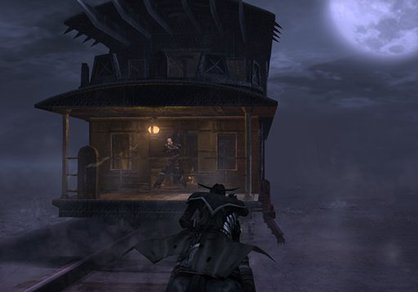
While it didn’t innovate much in the gameplay department, Darkwatch was a solid shooter with proficient controls. Its real strength was its unique horror/western setting and bizarre selection of gothy undead characters and enemies. The main character, Jericho Cross, is bitten at the outset by the vampire leader, and is slowly turning into a vampire himself. Though he evolves a handfulof powers as the game progresses (good or evil depending on player choice,) in practice they were actually pretty useless and underdeveloped. A sequel could offer improved supernatural powers. The multiplayer was also anemic, but could easily be fleshed out and made to shine.
Weekly digests, tales from the communities you love, and more
23. Cel Damage
PS2, Xbox, GC (EA/Pseudo Interactive, 2001)
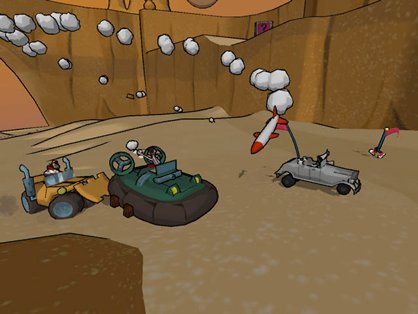
One of the early examples of cel-shaded animation in video games, 2001’s Cel Damage was a cartoon demolition derby with wacky characters and over-the-top weaponry. Think Loony Toons meets Twisted Metal, with lots of zany ways to destroy your opponents’ vehicles. Though the graphics sparkled (especially on a brand new, just launched Xbox,) gameplay quickly became repetitive due to a weak selection of arenas and modes. With an HD update and an expanded selection of maps and vehicles, Cel Damage could become a mainstay for online multiplayer.
24. Alfred Chicken
Amiga, Amiga CD32, NES, Game Boy, SNES, PlayStation (Mindscape Group/Twilight Games, 1993/2002)
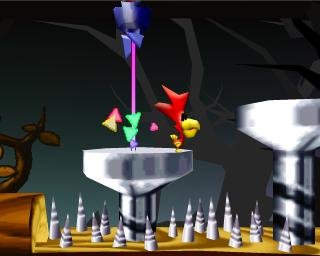
To be fair, Alfred Chicken did get a PSone facelift. But a remake does not a franchise make. Alfred Chicken is one of the original, “What the hell were they smoking when they came up withthat?” games.
25. Alter Echo
PS2, Xbox (THQ, Outrage Games, 2003)
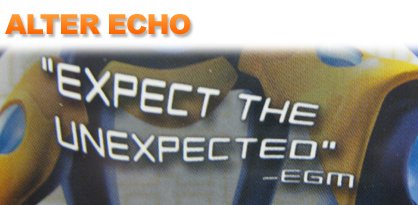
Alter Echo was a sci-fi actioner set on a planet whose very surface was alive. It had some really great ideas in it, but flubbed the overall execution with repetitive enemies and environments. Remember Fallout 3’s V.A.T.S.? Alter Echo used a similar but slightly more active system called Time Dilation that let players freeze time to set up combo chains. The shape-shifting PolySuit was another cool idea that just needed a better game around it. Alter Echo was dripping with potential, but poor sales and middling reviews put franchise dreams on hold.
26. Flashback
PC, Mac, SNES, Sega CD, Mega Drive / Genesis, 3DO, Amiga, Atari ST, Atari Jaguar and CD-I (U.S. Gold / Delphine Software, 1992)
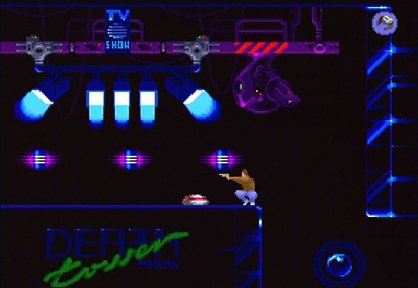
Since most ‘80s and ‘90s sidescrollers featured cartoon mascots bouncing through candy land environments, 1992’s Flashback stood out in a big way. The settings were gritty and futuristic, the sci-fi plot was drenched in mystery and the very human protagonist moved with fluid animation that is still amazingly lifelike to this day. So why, for chrissakes, did the follow-up (1995’s Fade to Black) abandon all that for generic, over-the-shoulder action-adventure 3D? We want a real sequel.
27. Stonekeep
PC (1995)
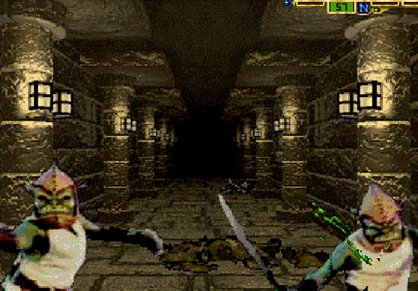
A first-person grid-based dungeon exploration game, Stonekeep created an original fantasy dungeon that begs for at least one sequel to take advantage of the imagination that went into the game. It still has a unique look today since it used tons of live-motion cinematic sequences to capture both enemies and NPCs (a cardinal gaming-sin of the 90’s). That combined with the unusual lack of free-roaming and the five-year development time didn’t officially cause (but may have speculatively contributed to) Black Isles cancelling Stonekeep 2: Godmaker while it was still in development.
28. Blackthorne
SNES, 32X, PC, GBA (Interplay/Blizzard, 1994)

It’s a side-scrolling action-puzzler like Prince of Persia and Out of This World, but with orcs, guns and a whole lot of badass attitude. Most heroes in games of this type are bumbling, insecure people caught in the wrong place at the wrong time. Blackthorne, on the other hand, sports a pump shotgun, can take cover anytime and has an ultra-slick behind-the-back shot where he fires without even looking. He doesn’t care what he hits, even if it’s a chained-up hostage begging for release. The ending even leaves the game wide open, so there’s no good reason why Blizzard hasn’t touched this since 1994. Oh, World of Warcraft has 12 million players? That’s a good reason…
29. Red Ninja: End of Honor
PS2, Xbox (Vivendi Universal Games/Tranji Studios, 2005)
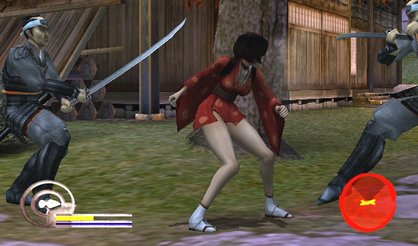
In the hands of a proficient developer, Red Ninja could be so much more than a poorly-executed Tenchu knockoff. After all, who wouldn’t want to play a game that contained a properly executed ninja seduction/stealth kill mechanic?
30. Armed & Dangerous
Xbox, PC (LucasArts/Planet Moon Studios, 2003)
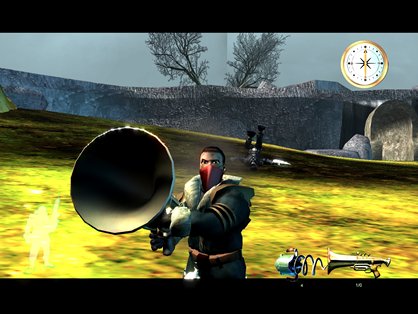
A third person shooter with a loutish sense of humor, Armed & Dangerous took liberties with everything from genre archetypes to common sense. The beloved Land Shark Gun is emblematic of AnD’s irreverent style. From the over the top weapons to the wacky cast of side characters, Armed & Dangerous could have a good run of sequels. So where are they??
31. I-Ninja
PS2, Xbox, GC, PC (Namco/Argonaut, 2003)

Before Ninjatown and Wee Ninjas, I-Ninja was killing you softly as the cutest little ninja on the block. It was oft compared to Shinobi, but less mature in tone. The main character, known only as Ninja, had a grip of sweet moves and a grappling hook to help him get around. Though this lighthearted platformer was marred by occasionally maddening level design, it had the potential to be much more.
32. Pirates: The Legend of Black Kat
PS2/Xbox (EA/Westwood, 2002)
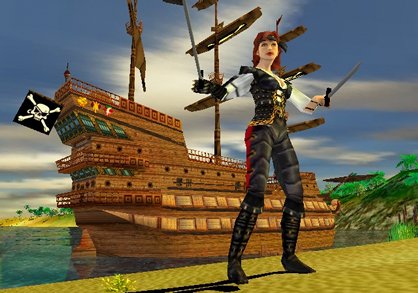
Pirates: The Legend of Black Kat was an action-adventure game that followed the exploits of swashbuckling pirate princess Katarina DeLeon (the titular Black Kat.) P:TLoBK was a fairly proficient action/adventure that didn’t really break a lot of new ground, however with a bit more effort the charismatic Black Kat could have become a more iconic character.
33. Slave Zero
PC, Dreamcast (1999)
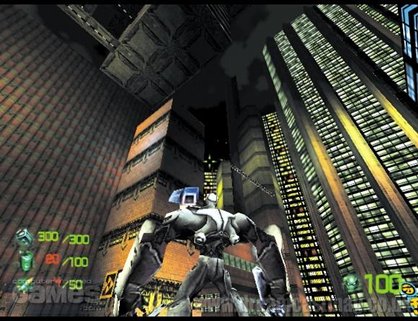
It’s excessively difficult to eff up a game about 60-foot cyborgs that trash futuristic cities, but that’s precisely what happened with this Dreamcast launch title. The action was forgettable, the graphics mediocre and the level layout, which was bland at the time, is worse than rudimentary today. However, all these problems are technological and could be solved with modern development tools and a team that really wants to sell the idea of a rogue robo-giant trashing an evil army. Throw in some customizable weapons, a bevy of online options and you could have a real contender for the next big multiplayer hit.
34. Urban Chaos: Riot Response
PS2, Xbox (Eidos/Rocksteady Studios, 2006)

Although Riot Response was technically a sequel to the original Urban Chaos, the connection between the two games didn’t really extend beyond the title. Casting players as a brutal supercop in a city consumed by riots and gang violence, Riot Response mixed its ultraviolence with concepts like civic duty, as you frequently had to rescue firemen, paramedics and other cops, who would then watch your back and/or open locked doors for you. It was also surprisingly good for a 2006 last-gen game, and the fact that there hasn’t been a follow-up – while not exactly surprising – is a little disappointing.
35. Mischief Makers
N64 (Nintendo/Treasure, 1997)
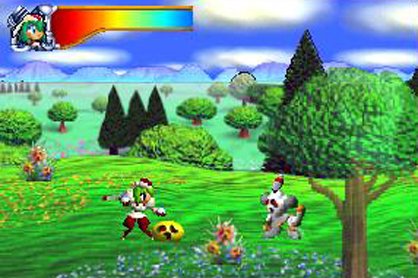
Possibly the most underrated and widely ignored game on the N64, Mischief Makers was pure 2D brilliance. Starring a goat-legged robot maid named Marina Liteyears, Mischief Makers took the same sensibilities that crafted the brilliant Gunstar Heroes on Genesis and applied them to a game about grabbing sad-faced aliens, shaking them until gems come out and then hurling them at other sad-faced aliens. It was pure, unadulterated awesome, but it was 2D at a time when 3D was the big thing, and on a console that was all about 3D. So of course most players summarily dismissed it as behind-the-curve crap, and a game with huge franchise potential (on the DS or a download service, most likely) faded into obscurity.
36. AMBER: Journeys Beyond
PC and Mac (Hue Forest, 1996)

Forget Fatal Frame. Ghosts were much, much scarier – or at least more disturbing – in this 1996 point-and-click adventure. Why? Because you didn’t fight them… you inhabited them, solving the mystery of their deaths by exploring the scenes of their last moments. Was it murder? Suicide? A tragic accident? Are these characters worth mourning? Or did they deserve to die? The answers were always different, and never expected, but the game included only three lost souls. The concept could have supported a hundred.
37. Syndicate
Amiga, Amiga CD32, PC, Mac, Sega Mega Drive, SNES, 3DO, Atari Jaguar, Acorn Archimedes, NEC PC-9801 (EA/Bullfrog, 1993)
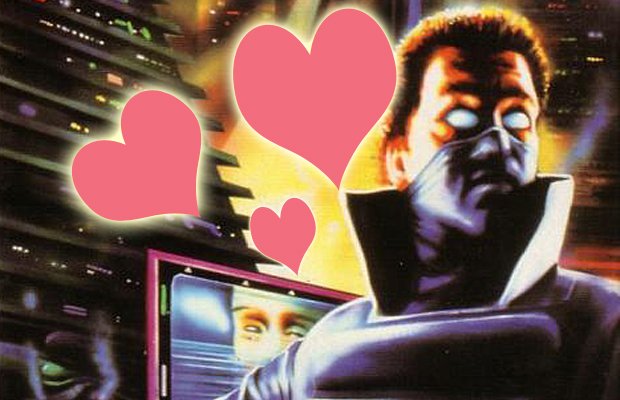
This real-time strategy game put you in charge of a corporation with world domination on its mind. Using four cyborg agents armed with deadly Gauss guns and slick trench coats, you could complete various missions to take over new territories and reap in the rewards of taxation without representation in Syndicate’s dystopian world. Is an online follow up to this great game a hopeless pipe dream? Maybe not. Peter Molyneux, the producer of Syndicate and designer of Fable, expressed interest in revisiting the series at the Leipzig Games Convention in an interview withGameSpotin 2006. "Aside from the licensing complications, some sort of next-gen online version of Syndicate would certainly be popular with gamers. I’d love to reprise games like Syndicate, Populous, and Dungeon Keeper, but as you point out, we'd need some business development people to sort this out," explained Molyneux.
38. Terra Nova: Strike Force Centauri
PC (Looking Glass, 1996)

Imagine MechWarrior, Rainbow Six and Ghost Recon combined seamlessly into one game. That was Terra Nova: Strike Force Centauri, a deeply tactical FPS in which military clans fought intergalactic pirates for control of trade and resources. “Powered Battle Armor” enabled combat across harsh planetary surfaces and uniquely talented squadmates (Recon, Demolitions, Electronics, etc.) meant that missions could be tackled with a countless number of strategies. Looking Glass, the same developer behind Thief and System Shock, intended Terra Nova to be a franchise as well… in the end, they couldn’t even afford to deliver the multiplayer pack promised on the back of the box.
39. Outlaws
PC (LucasArts, 1997)

In a genre stagnated with cramped hallways, overpowered weapons and repetitive alien-terrorist-zombie enemies, this forgotten first person shooter dared to be different. Playing as a retired U.S. Marshal in the Wild West, seeking revenge for his murdered wife and kidnapped daughter, you hunted down evil railroad barons, psychotic medicine men and fierce Native Americans… often with nothing more than a trusty six-shooter at your side. The settings were bright, expansive and – neatest of all – animated to look like a Disney adaptation of The Good,the Bad and the Ugly. While the game didn’t sell well in 1997, the concept seems too bizarrelybrilliant not to try again.
40. Battle Engine Aquila
Xbox, PC (Encore/Lost Toys, 2003)
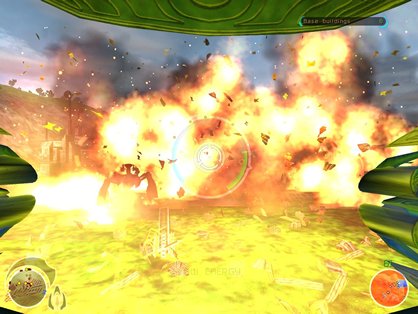
Two factions war for the remaining bits of land after global warming turns most of the planet toocean. You play a dock worker conscripted to pilot a giant transformable mech for a string of epicbattles over the precious remaining resources. Battle Engine Aquila had sophisticated AI forenemies and allies, making you really feel as though you were an integral part of a massivemilitary engagement. The only place Battle Engine Aquila fell down a bit was in the storydepartment, with a flimsy plot and horribly rendered cutscenes. Now if we could fuse Aquila’sgameplay with Robotech-caliber storytelling, we’d have a serious contender on our hands. Please,someone get to work on that.
GamesRadar+ was first founded in 1999, and since then has been dedicated to delivering video game-related news, reviews, previews, features, and more. Since late 2014, the website has been the online home of Total Film, SFX, Edge, and PLAY magazines, with comics site Newsarama joining the fold in 2020. Our aim as the global GamesRadar Staff team is to take you closer to the games, movies, TV shows, and comics that you love. We want to upgrade your downtime, and help you make the most of your time, money, and skills. We always aim to entertain, inform, and inspire through our mix of content - which includes news, reviews, features, tips, buying guides, and videos.


